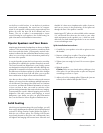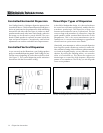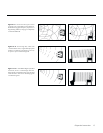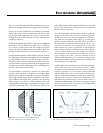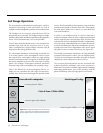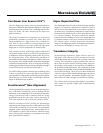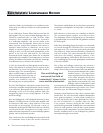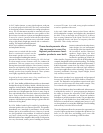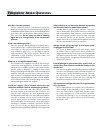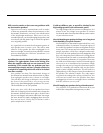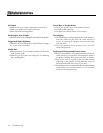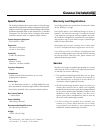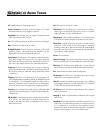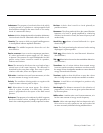
AC. Abbreviation for alternating current.
Active crossover. Uses active devices (transistors, ICs, tubes)
and some form of power supply to operate.
Amplitude. The extreme range of a signal. Usually measured
from the average to the extreme.
Arc. The visible sparks generated by an electrical discharge.
Bass. The lowest frequencies of sound.
Bi-Amplification. Uses an electronic crossover, or line-level
passive crossover, and separate power amplifiers for the
high and low frequency loudspeaker drivers.
Capacitance. That property of a capacitor which determines
how much charge can be stored in it for a given potential
difference between its terminals, measured in farads, by
the ratio of the charge stored to the potential difference.
Capacitor. A device consisting of two or more conducting
plates separated from one another by an insulating material
and used for storing an electrical charge. Sometimes called
a condenser.
Clipping. Distortion of a signal by its being chopped off.
An overload problem caused by pushing an amplifier beyond
its capabilities. The flat-topped signal has high levels of
harmonic distortion which creates heat in a loudspeaker
and is the major cause of loudspeaker component failure.
Crossover. An electrical circuit that divides a full bandwidth
signal into the desired frequency bands for the loudspeaker
components.
dB (decibel). A numerical expression of the relative loudness
of a sound. The difference in decibels between two
sounds is ten times the Base 10 logarithm of the ratio of
their power levels.
DC. Abbreviation for direct current.
Diffraction. The breaking up of a sound wave caused by
some type of mechanical interference such as a cabinet
edge, grill frame or other similar object.
Diaphragm. A thin flexible membrane or cone that vibrates
in response to electrical signals to produce sound waves.
Distortion. Usually referred to in terms of total harmonic
distortion (THD) which is the percentage of unwanted
harmonics of the drive signal present with the wanted signal.
Generally used to mean any unwanted change introduced
by the device under question.
Driver. See transducer.
Dynamic Range. The range between the quietest and the
loudest sounds a device can handle (often quoted in dB).
Efficiency. The acoustic power delivered for a given electrical
input. Often expressed as decibels/watt/meter (dB/w/m).
ESL. Abbreviation for electrostatic loudspeaker.
Headroom. The difference, in decibels, between the peak
and RMS levels in program material.
Hybrid. A product created by the marriage of two different
technologies. Meant here as the combination of a dynamic
woofer with an electrostatic transducer.
Hz (Hertz). Unit of frequency equivalent to the number of
cycles per second.
Imaging. To make a representation or imitation of the original
sonic event.
Impedance. The total opposition offered by an electric circuit
to the flow of an alternating current of a single frequency.
It is a combination of resistance and reactance and is
measured in ohms. Remember that a speaker’s impedance
changes with frequency, it is not a constant value.
26 Glossary of Audio Terms
GLOSSARY OF AUDIO TERMS



